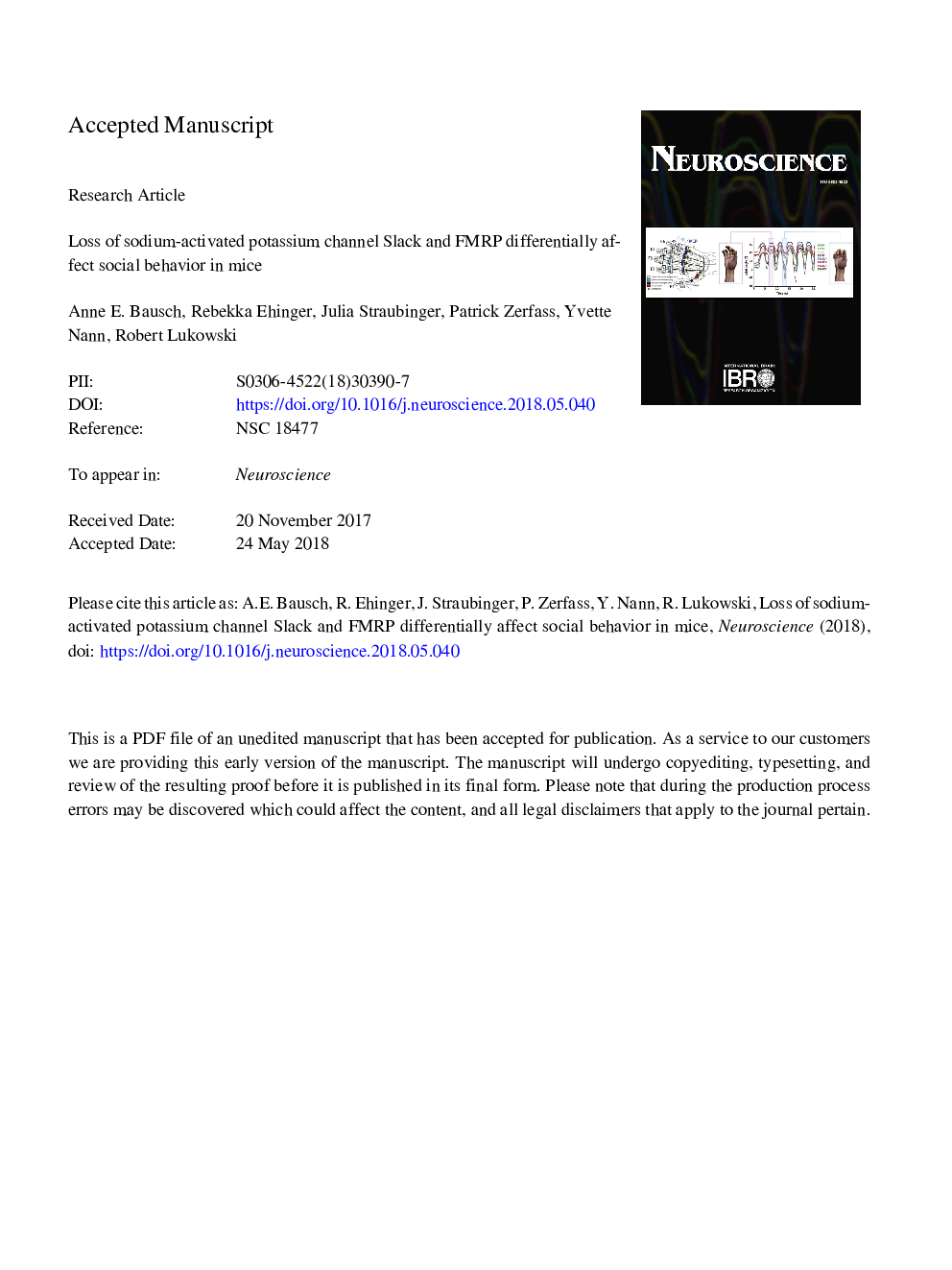| کد مقاله | کد نشریه | سال انتشار | مقاله انگلیسی | نسخه تمام متن |
|---|---|---|---|---|
| 8840619 | 1614692 | 2018 | 37 صفحه PDF | دانلود رایگان |
عنوان انگلیسی مقاله ISI
Loss of Sodium-Activated Potassium Channel Slack and FMRP Differentially Affect Social Behavior in Mice
دانلود مقاله + سفارش ترجمه
دانلود مقاله ISI انگلیسی
رایگان برای ایرانیان
کلمات کلیدی
موضوعات مرتبط
علوم زیستی و بیوفناوری
علم عصب شناسی
علوم اعصاب (عمومی)
پیش نمایش صفحه اول مقاله

چکیده انگلیسی
The sodium-activated potassium channel Slack (Slo2.2) is widely expressed in central and peripheral neurons where it is supposed to shape firing properties important for neuronal excitability. Slack activity is enhanced by interaction with the Fragile-X-Mental-Retardation-Protein (FMRP) and loss of FMRP leads to decreased sodium-activated potassium currents in medial nucleus of the trapezoid body neurons of the Fmr1-knockout (KO) mouse representing a mouse model of the human Fragile-X-Syndrome (FXS) and autism. Autism is a frequent comorbidity of FXS, but it is unclear whether Slack is involved in autistic or related conditions of FXS in vivo. By applying a wide range of behavioral tests, we compared social and autism-related behaviors in Slack- and FMRP-deficient mice. In our hands, as expected, FMRP-deficiency causes autism-related behavioral changes in nesting and in a marble-burying test. In contrast, Slack-deficient males exhibited specific abnormalities in sociability in direct and indirect social interaction tests. Hence, we show for the first time that a proper Slack channel function is mandatory for normal social behavior in mice. Nevertheless, as deficits in social behaviors seem to occur independently from each other in FMRP and Slack null mutants, we conclude that Slack is not involved in the autistic phenotype of FMRP KO mice.
ناشر
Database: Elsevier - ScienceDirect (ساینس دایرکت)
Journal: Neuroscience - Volume 384, 1 August 2018, Pages 361-374
Journal: Neuroscience - Volume 384, 1 August 2018, Pages 361-374
نویسندگان
Anne E. Bausch, Rebekka Ehinger, Julia Straubinger, Patrick Zerfass, Yvette Nann, Robert Lukowski,